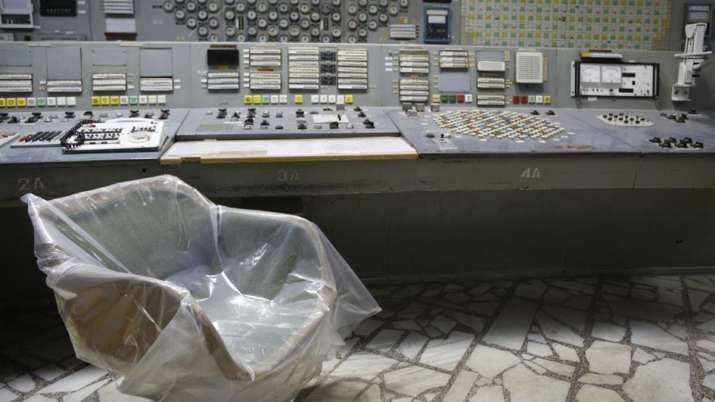
An operator’s chair covered in plastic sits in the empty control room of the third reactor at the Chernobyl nuclear plant on April 20, 2018 in Chernobyl, Ukraine.
Highlight
- Russian military controlling Chernobyl nuclear plant revives fears of 1986 disaster
- The 1986 disaster killed dozens and spread radioactive effects to much of the Northern Hemisphere
- In particular, higher-than-normal gamma radiation levels have been reported at the Chernobyl nuclear plant.
The International Atomic Energy Agency, the UN nuclear watchdog, said on Tuesday that the Chernobyl nuclear power plant was no longer transmitting data. The agency expressed concern for employees working under the Russian Guard at the plant, which is the largest in Europe.
Earlier on 24 February, Russian forces invaded Ukraine and seized the dormant plant. Although the UN nuclear power watchdog had previously said that no radiation had been released after Russian forces took control of the nuclear plant after heavy shelling, the attack has revived fears across Europe. Recalls the Chernobyl disaster of 1986, in which many people were killed and overrun. Radioactive fallout over much of the Northern Hemisphere.
The head of the International Atomic Energy Agency, Rafael Grossi, “indicated that remote data transmission from the monitoring system of security measures installed at the Chornobyl NPP was lost”, the agency said in a statement. “The agency is monitoring the status of the security measures monitoring system in other locations in Ukraine and will provide further information soon,” it said.
The IAEA uses the term “protection measures” to describe technical measures applied to nuclear materials and activities intended to prevent the spread of nuclear weapons by early detection of such material misuse.
On April 26, 1986, a sudden power surge during a reactor system test destroyed Unit 4 at the Chernobyl power plant in northern Ukraine, which was then part of the Soviet Union. The accident and fire were followed by massive amounts of radioactive material, forcing the evacuation of surrounding communities and contaminating 150,000 square kilometers (60,000 sq mi) of land in Belarus, Russia and Ukraine.
Two plant workers were killed in the initial explosion, and 28 others died within the next three months. According to a report by the United Nations Scientific Committee on the Effects of Radiation, as of 2005, more than 6,000 thyroid cancers were reported in children and adolescents in the affected area, many of which were likely caused by radiation.
Read more: Ukraine’s nuclear agency reports increased radiation levels from Chernobyl